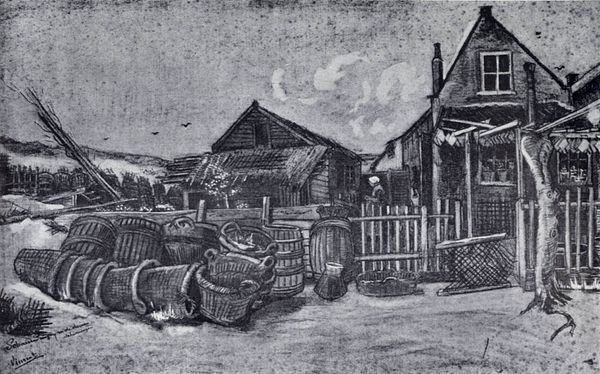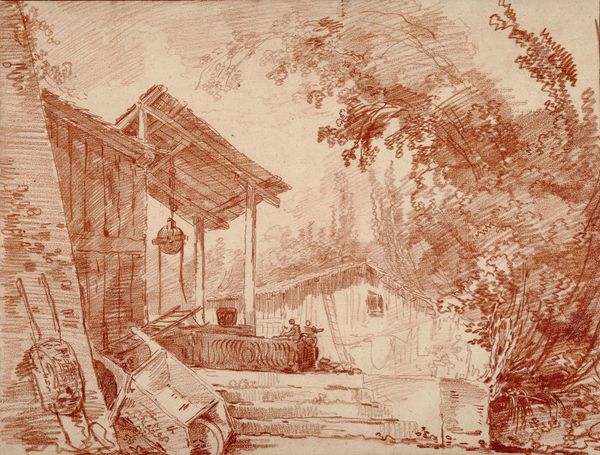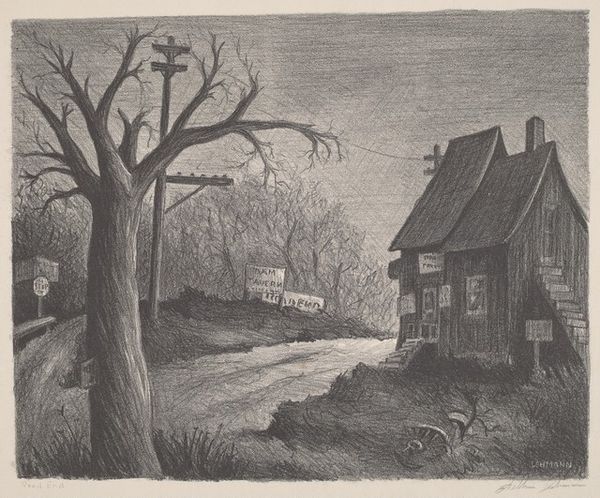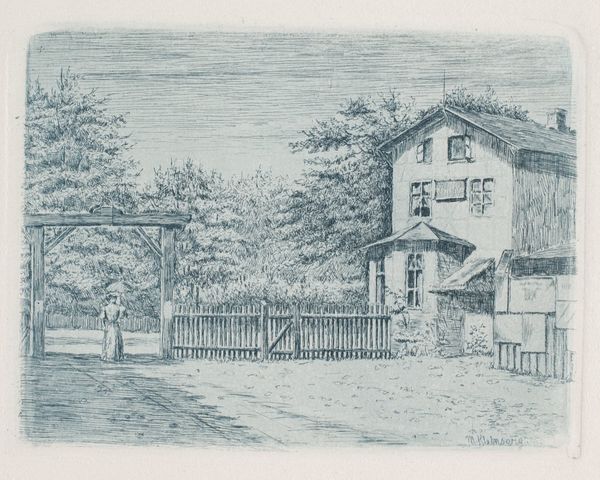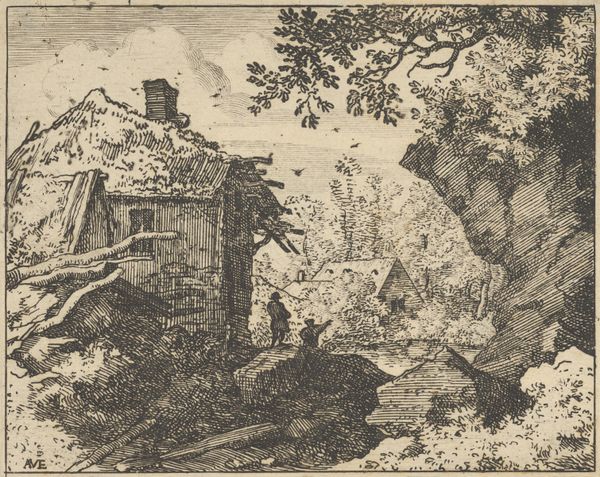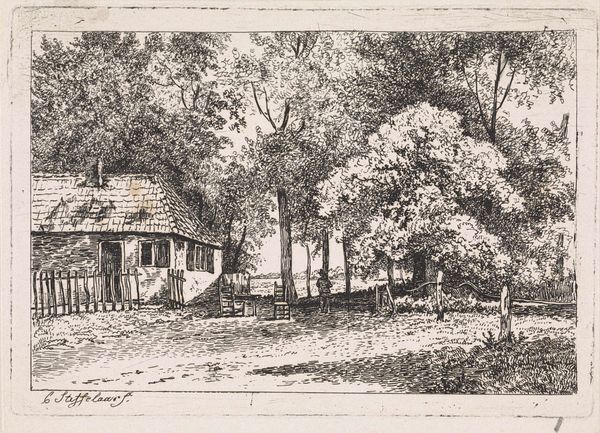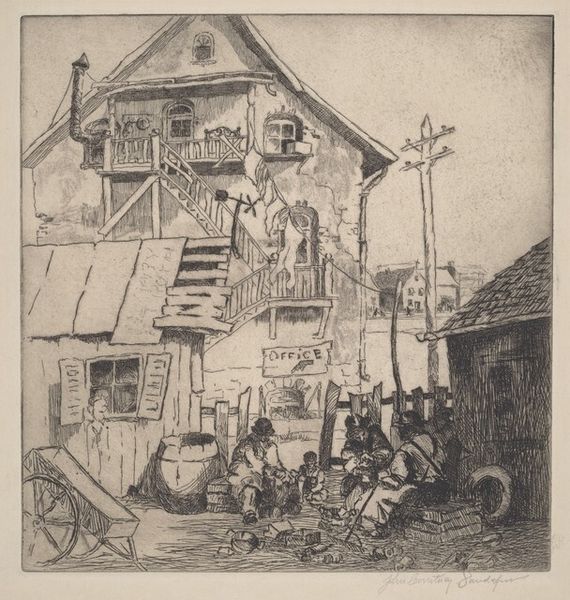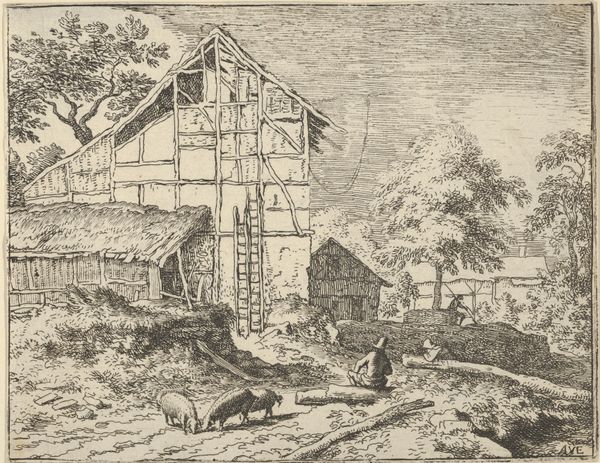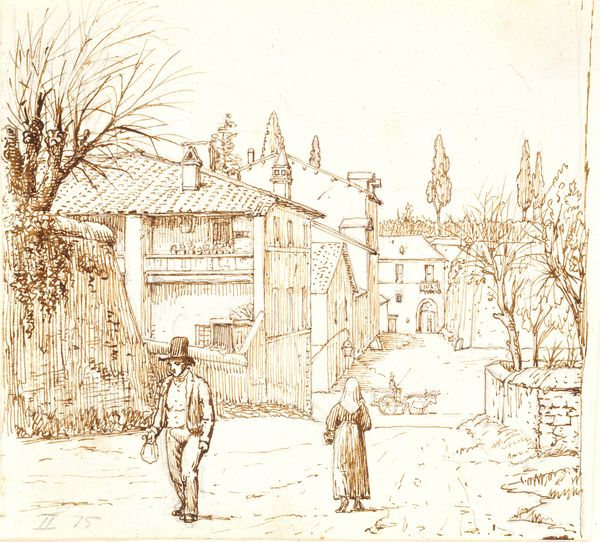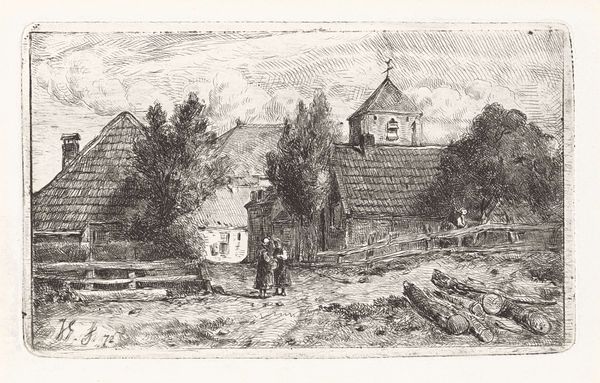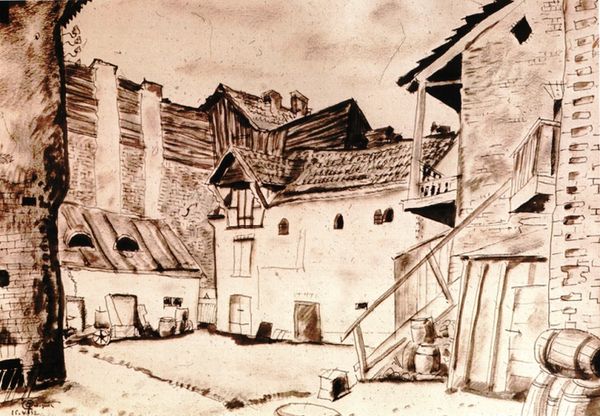
print, mezzotint
#
amateur sketch
# print
#
pencil sketch
#
charcoal drawing
#
charcoal art
#
pencil drawing
#
england
#
mezzotint
#
surrealism
#
surrealist
#
charcoal
#
graphite
#
digital portrait
Dimensions: 7 x 10 in. (17.78 x 25.4 cm) (plate)
Copyright: Public Domain
Curator: Let's turn our attention to John Constable's "Gillingham Mill," likely created sometime between 1830 and 1855. It's a mezzotint currently residing here at the Minneapolis Institute of Art. Editor: Immediately, I'm struck by its density. The layering of dark tones creates this incredibly rich, almost brooding atmosphere, even with a relatively mundane subject. Curator: The mill as a structure…it's almost an archetype of English rural life, isn't it? Think of the constant turning of the wheel, a visual metaphor for time and the relentless march of progress—a sentiment so often explored in Romantic art of the era. The mill represents industry grounded in the landscape, yes, but the scene seems to hint at deeper symbolic layers about human progress’s effect on nature, an idealized past confronted by tangible work. Editor: Exactly! And as a mezzotint, we have to consider the process. That velvety darkness you mention? That comes from the artist roughening the entire plate before selectively burnishing areas to create lighter tones. It's a labor-intensive process to represent the daily labor around that wheel. Someone spent hours carefully crafting each shadow, mirroring the hard work involved in operating the mill itself. Think of the soot and water inherent to this working structure. It gives it weight, literally. Curator: Yes, that's fascinating. And consider the presence of that figure—small but vital to the scene. He serves not only as an indicator of scale but reminds us that this is a lived space, not merely a picturesque scene. His inclusion adds a narrative element, prompting us to consider the daily lives of those connected to the mill, what rituals of work and time exist at this location. It evokes an echo in the soul. Editor: A romanticized labor though, I’d argue. Constable perhaps glosses over the grit and grime of milling, using the technique of mezzotint to render what is often repetitive and difficult into this sort of soft and velvety image. The romanticism feels… crafted. Curator: Perhaps. Yet the mill endures. And it carries the symbolism we imprint upon it. Thank you for adding a layer of texture to my perceptions about the historical importance and the artist’s intentions within the image. Editor: And thank you for letting me consider that even the medium is part of a much larger social fabric around labor.
Comments
No comments
Be the first to comment and join the conversation on the ultimate creative platform.

